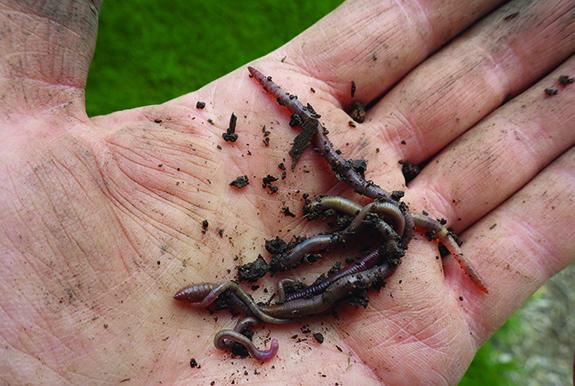Perhaps you recall July evenings after a warm rain, when robins sing their evening song and long slanting sunrays light up pastures and brighten the aspen groves – that was the time to grab a shade and head for the garden to dig earthworms. It happened when our Dads were coaxed into fishing trout down at the bridge; if we hurried, we could be first to fish the plunge pool next to the undercut. The worms were always easy to find in the rich dark loam of the garden. The right sized coffee can had to be used, one large enough for our hand to reach down inside to pull-out a handful of soil and worms, without getting scraped on the burr left from the can opener.
As kids, the rods were sometimes a Zebco Dock Demon combo or a Shakespeare Micro Spinning rod, but always with a red and white bobber, sinkers on a stout line just above the hook and fish bucket. In the car, as we drove down the steep narrow gravel road, we always craned our necks looking over the hill crest to see if we were first to the bridge.
Several worms were needed to get the right look, enough worm to make it worthwhile for a trout and with a dangling length to get their attention. When the sun sank, the water became darker and moving silently with a force that seemed to gather our gear and pull it down deep to where trout lived. We did not need to understand what went on down there; we just lived in the experience. Time and mosquitoes did not matter especially when fishing was good. We stayed late, fished long and went to bed tired – somehow the fish got cleaned.
As we grew older things changed for us who stayed with the game, the terms we used were “refined”. Earthworms became “garden hackle” to some and were avoided by others. Some of us synthesized worms into a fly pattern given a fancy descriptor like the San Juan Worm, which was to be used when nothing else worked. The rod became a graphite rod, or even bamboo, and we have indicators now, no red and white bobbers. No one would think of a fish pail today, we use digital imaging for the catch and do not have to clean anything before bed.
Change is not bad and understanding our roots is a good thing and is a part of growing our sport. It is bringing those new to the sport of fly fishing, that is our challenge. Many of us adults and a few precocious youth just completed three weeks of chasing the Hexagenia mayfly hatch across our Central Wisconsin’s trout streams. We choked up a number of roadway crossings with parked trucks and cars while fishing into the early hours of the next day. Our competitive posture at the start of the daily event characterized by little talk, efficient gathering of gear and rapid dispersal to our favorite fishing spot, left little time for comradery and sharing. However, by night’s end and early morning as we gathered in small groups near our vehicles, our mode had changed, giving way to conversations and exclamations of successes and frustrations experienced through hours of nighttime fishing.
As we remember back to the first time we were included in these after-dark gatherings, we know how instrumental the shared experiences were in connecting us to our trout streams. We listened, learned and refined our fishing methods and gear. This remains true today, somewhere nearby there are kids who want to fish and others who do not yet realize they want to fish, that need to be invited. We need not wait until the robin calls in the evening sunlight to take a kid fishing. If nothing else, we may relearn the experience of drifting worms under a float and begin to reimagine ourselves as kids and know again being connected to trout streams is always a good thing.


